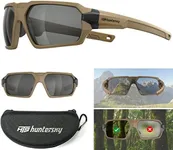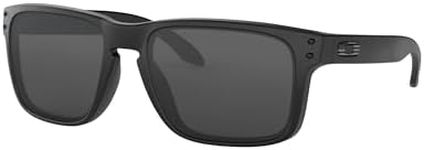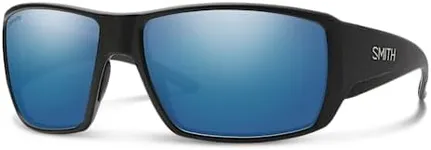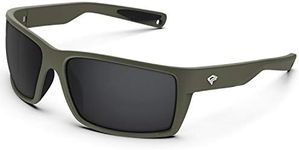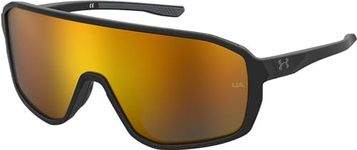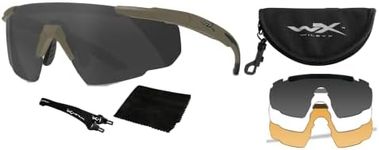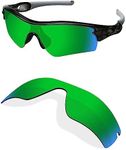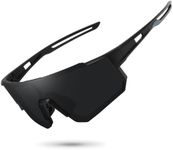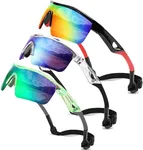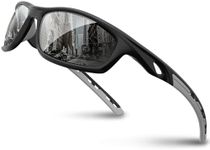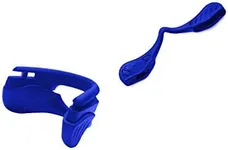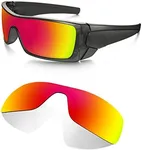Buying Guide for the Best Tactical Sunglasses
When choosing tactical sunglasses, it's important to consider several key specifications to ensure you get the best fit for your needs. Tactical sunglasses are designed to provide protection, enhance vision, and offer durability in various challenging environments. Understanding these specifications will help you make an informed decision and select the right pair for your activities, whether it's for outdoor sports, military use, or everyday wear.Lens MaterialThe lens material is crucial because it affects the durability, clarity, and weight of the sunglasses. Common materials include polycarbonate, which is lightweight and impact-resistant, and glass, which offers superior clarity but can be heavier and more prone to shattering. For tactical use, polycarbonate lenses are often preferred due to their balance of durability and weight. If you need sunglasses for high-impact activities, opt for polycarbonate lenses.
UV ProtectionUV protection is essential to shield your eyes from harmful ultraviolet rays, which can cause long-term damage. Look for sunglasses that offer 100% UV protection or UV400, which blocks all UVA and UVB rays. This is particularly important if you spend a lot of time outdoors. Ensure the sunglasses you choose provide full UV protection to keep your eyes safe.
Lens CoatingsLens coatings can enhance the performance of your sunglasses. Anti-scratch coatings help maintain clear vision by preventing scratches, while anti-reflective coatings reduce glare and improve visibility in bright conditions. Polarized lenses are also beneficial as they reduce glare from reflective surfaces like water or roads. If you frequently encounter bright, reflective environments, consider sunglasses with polarized lenses and additional coatings for optimal performance.
Frame MaterialThe frame material affects the durability, weight, and comfort of the sunglasses. Common materials include plastic, metal, and composite. Plastic frames are lightweight and affordable, while metal frames offer a more durable and sometimes more stylish option. Composite frames combine the benefits of both, providing a balance of strength and lightness. Choose a frame material that suits your comfort preferences and the demands of your activities.
Fit and ComfortFit and comfort are critical for ensuring that the sunglasses stay securely on your face during activities. Look for features like adjustable nose pads, rubberized grips, and flexible hinges that can enhance comfort and fit. It's important to try on different styles to find a pair that fits well without causing pressure points. If you plan to wear the sunglasses for extended periods, prioritize comfort and a secure fit.
Impact ResistanceImpact resistance is a key feature for tactical sunglasses, as it ensures the lenses and frames can withstand rough conditions and protect your eyes from debris. Look for sunglasses that meet or exceed ANSI Z87.1 standards for impact resistance. This is particularly important for activities like shooting, cycling, or any high-impact sports. Ensure the sunglasses you choose are rated for impact resistance to provide maximum protection.
Lens ColorLens color can affect how you perceive colors and contrast in different lighting conditions. Common lens colors include gray, which reduces overall brightness without distorting colors, and brown or amber, which enhances contrast and depth perception. Yellow lenses are good for low-light conditions as they increase contrast. Choose a lens color based on the typical lighting conditions you will encounter. For versatile use, gray or brown lenses are often a good choice.
